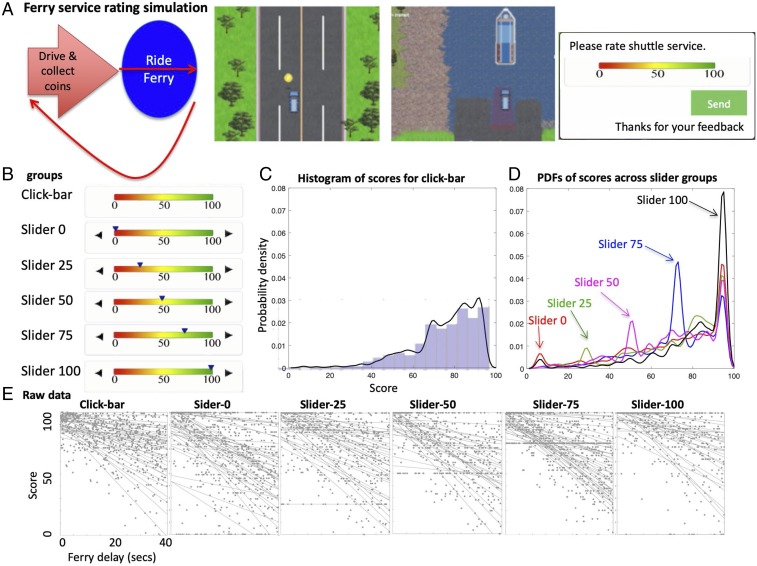Fig. 1.
Slider initial position affects distribution of rating scores. (A) Ferry-service rating game. (Left) Flowchart of the ferry services simulation game. (Middle) Subject maneuvering a simulated car to collect coins. (Right) Waiting for ferry service to cross a lake. Subsequently, players were asked to rate their satisfaction with the ferry service along an analog visual scale of 0–100. (B) Rating devices of the six experimental groups (n = 40 subjects × 6 groups). (B, Top) Click bar. Sliders, including two push buttons that move the cursor (black triangle) either left or right at a constant velocity. Groups differ in the initial position of the cursor: either 0, 25, 50, 75, or 100. (C) Smoothed histogram of ferry rating scores for the click-bar group. (D) Smoothed histograms of ferry rating for the five slider groups. Peaks represent cases where subjects submitted default scores. (E) Scatterplot of ferry delays versus raw rating scores. Lines represent within-subject regression slopes. Horizontal clusters of markers indicate cases where subjects submitted default scores.

